A figure does not have to be a regular polygon to tessellate. Every triangle and every quadrilateral tessellates, as the figures below show.

Every tessellation has at least one type of symmetry. The tessellation with regular hexagons below has reflectional symmetry in each of the blue lines. It has rotational symmetry centered at each of the red points. The tessellation also has translational symmetry and glide reflectional symmetry, as shown below.
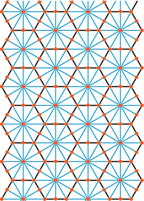
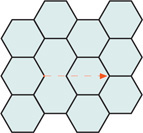
In translational symmetry, a translation maps the tessellation onto itself.
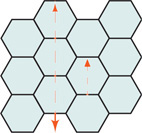
In glide reflectional symmetry, a glide reflection maps the tessellation onto itself.
 Problem 3 Identifying Symmetries in a Tessellation
Problem 3 Identifying Symmetries in a Tessellation
What types of symmetry does the tessellation below have?
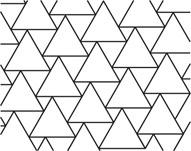
Think
How can you test the tessellation for the different types of symmetry?
Use tracing paper. Trace one unit of the repeating pattern and slide it into positions that allow you to check for the different types of symmetry.
The tessellation has rotational symmetry, centered at each red point, and translational symmetry, as shown by the blue arrow.

✓ Got It?
-
- What types of symmetry does the tessellation below have?
- Reasoning The figure in Problem 3 shows one translation arrow. Copy the diagram and show translation arrows for two other translations that map the tessellation onto itself.
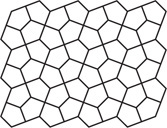
Table of Contents
- 6-1 The Polygon Angle-Sum Theorems
- 6-2 Properties of Parallelograms
- 6-3 Proving That a Quadrilateral Is a Parallelogram
- 6-4 Properties of Rhombuses, Rectangles, and Squares
- 6-5 Conditions for Rhombuses, Rectangles, and Squares
- 6-6 Trapezoids and Kites
- 6-7 Polygons in the Coordinate Plane
- 6-8 and 6-9 Coordinate Geometry and Coordinate Proofs




